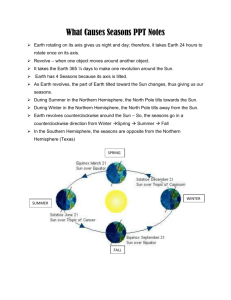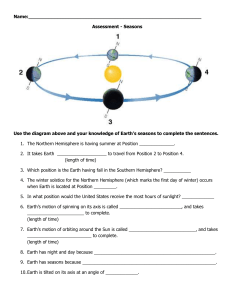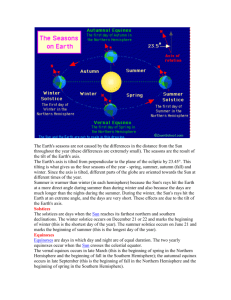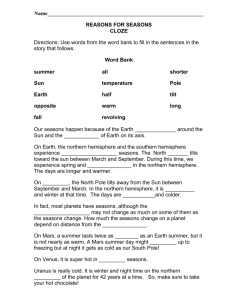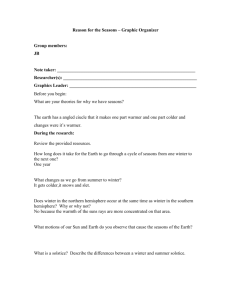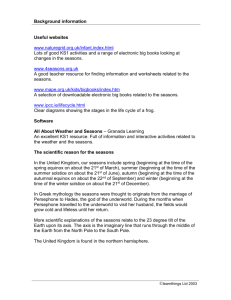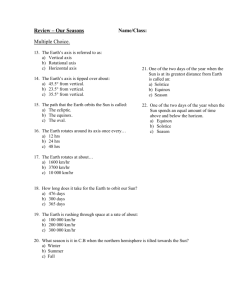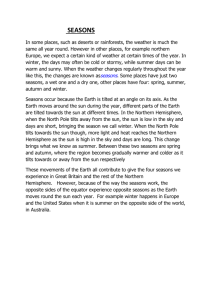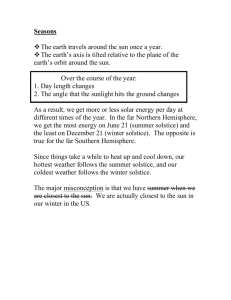earth_rotation_causing_season_and_day_and_night
advertisement
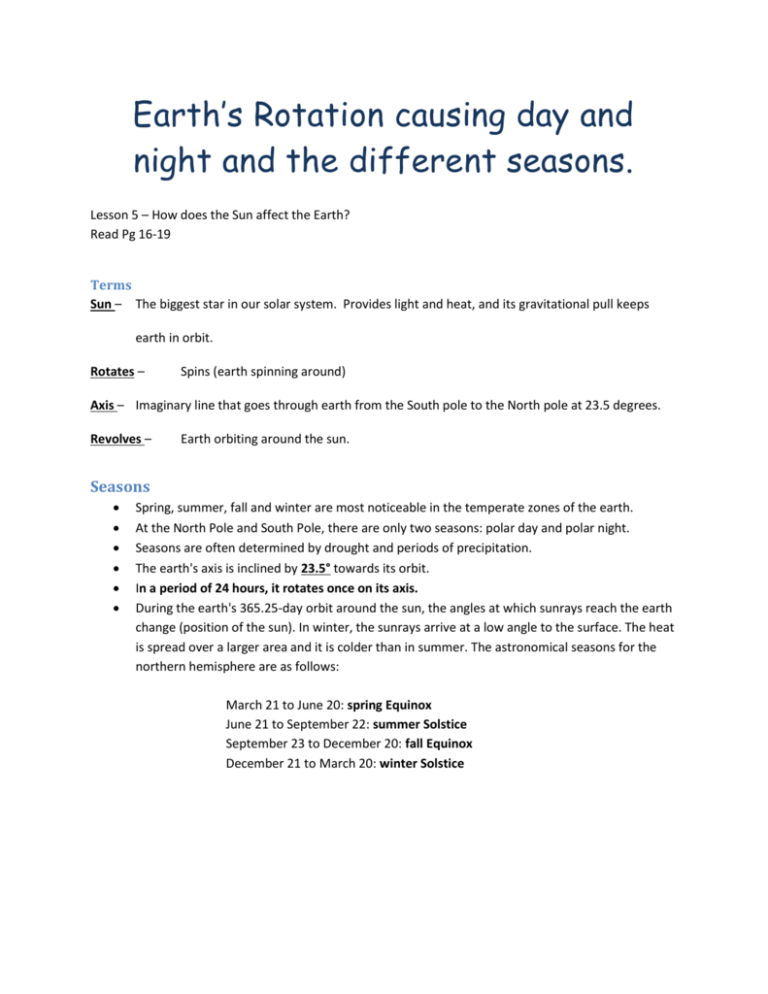
Earth’s Rotation causing day and night and the different seasons. Lesson 5 – How does the Sun affect the Earth? Read Pg 16-19 Terms Sun – The biggest star in our solar system. Provides light and heat, and its gravitational pull keeps earth in orbit. Rotates – Spins (earth spinning around) Axis – Imaginary line that goes through earth from the South pole to the North pole at 23.5 degrees. Revolves – Earth orbiting around the sun. Seasons Spring, summer, fall and winter are most noticeable in the temperate zones of the earth. At the North Pole and South Pole, there are only two seasons: polar day and polar night. Seasons are often determined by drought and periods of precipitation. The earth's axis is inclined by 23.5° towards its orbit. In a period of 24 hours, it rotates once on its axis. During the earth's 365.25-day orbit around the sun, the angles at which sunrays reach the earth change (position of the sun). In winter, the sunrays arrive at a low angle to the surface. The heat is spread over a larger area and it is colder than in summer. The astronomical seasons for the northern hemisphere are as follows: March 21 to June 20: spring Equinox June 21 to September 22: summer Solstice September 23 to December 20: fall Equinox December 21 to March 20: winter Solstice On March 21 and September 23, day and night are of equal length. June 21 is the longest day with the shortest night period (summer solstice). In the southern hemisphere, it is fall when it is spring in the north, while the northern summer coincides with the season of winter in the south. There is no abrupt change of season on the astronomically defined dates. As the position of the sun is not the only factor that determines the climate, there is a gradual change from one season to the next. Day and night Day is the time between sunrise and sunset. Only at the equator are day and night of equal length (12 hours). Towards the North and South Pole, the difference between day and night becomes more prominent. At the poles, there is daylight during summer and night during winter. Day and night are caused by the earth's rotation on its own axis. On the side facing the sun it is day, while it is night on the side facing away from the sun. Questions 1. When it is summer in the Northern Hemisphere, what season is it in the Southern Hemisphere? 2. Why is 365.25 days in a calendar year? 3. How many times in one day is Canada facing the sun? 4. Describe what a typical year would look like (based on seasons) if the Earth did not rotate on its axis? 5. China and Canada are on opposite sides of the Earth. When the sun is rising in Canada, what is it doing in China at that time? Task- Draw a time-lapse of Canada’s position in space in one day. Draw a bi-hourly account of the change to Canada’s position relative to the sun. Task – Draw a time-lapse of Canada’s position in space over the course of a year. Demonstrate the 4 seasons and how the axis that Earth rotates on creates the seasonal affects (cold in winter).

